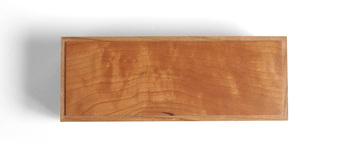 The proportions and general design of this box are strongly tied to the boxes that I've already made, but there are two new twists, and both work nicely, I think. First, the complete interior is painted. The inside faces of the top and bottom are painted, but the inside faces of the box sides are not. Instead, I painted some liners and put those in after I cut the lid from the box. I did this instead of painting the sides, because I wanted to use the liners to achieve the second new feature. Notice that there is a liner not only in the bottom (a common technique to keep the lid in place), but also in the top to create a small (1/16 in. wide) separation between the box body and lid. By adjusting the height of the liners in the lid, I could alter the width of the space between the box and lid. I like the dark shadow line it creates. I settled on 1/16 in. because that's the width of the kerf cut by the blade in bandsaw (it has carbide teeth, so it cuts a wider kerf than many bandsaw blades). The grain flow from bottom to lid is natural this way. There's no discernible hiccup in the flow as there would be if the lid sat directly on the box sides. Also, the top and bottom are both 1/16 in. proud of the sides to mirror the shadow line between the lid and body. Now, back to the painted interior. I've wanted to do this for a long time, but this is first box it was suitable for. Perhaps it's not a surprise, but I like it. To do this successfully, the interior must be lighter than the exterior. Right now the cherry is still a bit reddish pink, but it will darken in time, the marigold yellow on the inside will stay just the same, but pop all the more as the cherry darkens. It's really going to be eye catching in about a year. And, of course, marigold yellow milk paint has once again done me right. If only she could drink whisky, dance to Van Morrison in the setting sun, and cook a mean low country boil. The cherry veneer I used for the top and bottom is much darker than the cherry I used for the box and lid sides. Part of that is a function of age. I've had the veneer for at least 8 years. But it was dark when I got it, and it didn't change color when I scraped and sanded it. It is oxidized all the way through. You might think that's only possible because it's so thin, but I've cut into very old cherry boards that were completely oxidized throughout their thickness—and these were 1 in. thick boards. Jointing, planing, hand planing did not change its color. I hope the veneer is always darker than the sides. They compliment each other nicely. And this can be applied more broadly. What's a great wood to pair with hard maple? Figured maple. A good wood for sapele? Ribbon figured sapele. You don't need to go to a strongly contrasted color to create variance. Do something subtle. Subtle is good. These thoughts be random. Argh!
5 Comments
Jerry Stark
7/21/2015 02:08:24 am
The reveal between the lid and the box is a great touch. So simple, yet perfect.
Reply
Matt Kenney
9/8/2015 02:30:48 pm
Emil,
Reply
Chris
9/30/2015 02:55:31 pm
Matt, I love your boxes, I think they are a great combination of woodworking techniques with a more modern design eye.
Reply
Matthew Kenney
9/30/2015 04:11:49 pm
Chris,
Reply
Your comment will be posted after it is approved.
Leave a Reply. |
AuthorI love furniture design, and smart techniques. This blog is about both. Archives
August 2020
Categories |
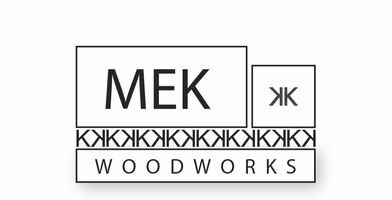
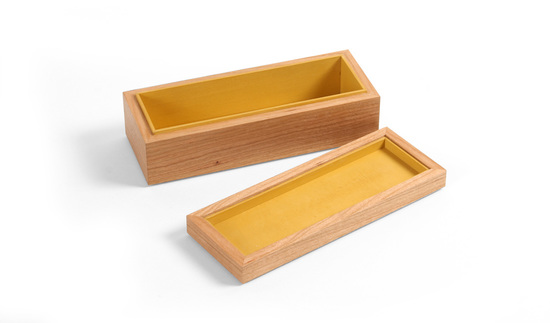
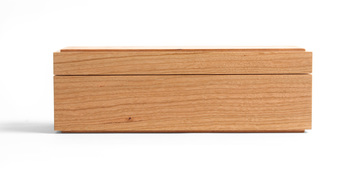
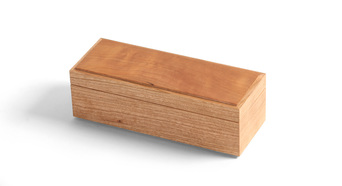
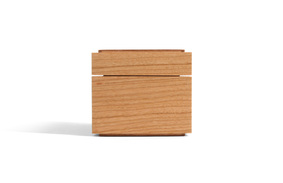
 RSS Feed
RSS Feed